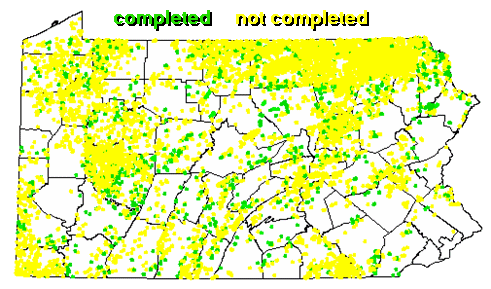SCC Program Overview
The Program received an annual allocation of $4 Million from 1997 through 2013. Starting in 2014, the Program allocation was increased to $28 Million, with a minimum of $8 Million earmarked to paved low volume roads. A brief overview of the Program is provided below, additional history, details and practices can be found in the tabs to the left.
PA State Conservation Commission:
Allocates funding to Conservation Districts based on amount of eligible roads and identified pollution sites.
Conservation Districts:
County-based entities that administer the Program at the local level. Local public road-owning entities apply to the District for grants to fund individual worksites.
Quality Assurance Board:
County-based multidisciplinary advisory board that establishes county-specific policies and ranking criteria, and recommends projects for funding.
Grant Applicants:
Public road-owning entities who apply to their Conservation District for grant funding for individual projects. Most grant applicants are municipalities, although any state or local public road-owning entity is eligible after attending a two day “Environmentally Sensitive Maintenance” training.
Center for Dirt and Gravel Road Studies:
Beginning in 2014-15, a portion of the Program’s funding was directed towards paved or sealed low volume roads with 500 vehicles per day or less. The focus of road projects in the Low Volume Road (LVR) portion of the Program is on similar Environmentally Sensitive Maintenance principles that have been used in the Dirt and Gravel Road Program since its inception. Some LVR-specific resources and policies can be found here.
- Stresses site-specific, long-term solutions to prevent erosion and pollution, instead of “band-aid” fixes.
- Reduces pollution while promoting sustainable unpaved roads.
- Minimal administration; limited to 2% at the state level; limited to 10% at the local level.
- Emphasis on informed local control and environmental soundness puts decision-making at local level.
- Adherence to program values assured through central training, technical assistance, and quality control.
- Uses a computerized GIS system used for project tracking and central reporting with minimal paperwork.

worksites
PA's 17,000+ stream pollution sites on unpaved roads





